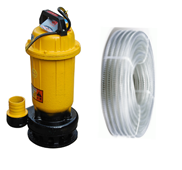cellulose evaporative cooling pad
Dec . 16, 2024 16:55 Back to list
cellulose evaporative cooling pad
The Role of Cellulose Evaporative Cooling Pads in Sustainable Cooling Solutions
In the quest for sustainable solutions to combat rising temperatures and reduce energy consumption, cellulose evaporative cooling pads have emerged as an innovative technology. These pads are an essential component in evaporative cooling systems, which offer a more environmentally friendly alternative to traditional air conditioning. This article will delve into the materials, functions, advantages, and applications of cellulose evaporative cooling pads.
What are Cellulose Evaporative Cooling Pads?
Cellulose evaporative cooling pads are made from specially treated cellulose fibers that are configured to maximize surface area and enhance water retention. These pads are designed to facilitate the evaporation process, which cools the air as it passes through. The cellulose material is not only efficient but also biodegradable, making it a sustainable choice compared to synthetic alternatives.
How Do They Work?
The principle behind evaporative cooling is quite simple. When water evaporates, it absorbs heat from the surrounding environment, leading to a decrease in temperature. In an evaporative cooling system, warm air is drawn through the moist cellulose pads. As the air passes through, the moisture from the pads evaporates, thereby cooling the incoming air before it is distributed into indoor spaces. This process not only cools the air but also increases humidity, creating a more comfortable environment in arid regions.
Advantages of Cellulose Evaporative Cooling Pads
1. Energy Efficiency One of the most significant benefits of using cellulose pads in evaporative cooling systems is their low energy consumption. These systems require less electricity than traditional air conditioning units, leading to substantial savings on energy bills and a reduction in carbon footprint.
2. Environmentally Friendly Cellulose is a natural material derived from plants, making it a renewable resource. The use of biodegradable materials helps in reducing waste and promotes sustainability. Additionally, evaporative cooling itself is a natural process that does not deplete refrigerants, which are often harmful to the environment.
3. Cost-Effective The initial investment for evaporative cooling systems with cellulose pads can be lower than that of traditional air conditioning systems. Furthermore, the operational costs are significantly reduced due to lower energy consumption and less frequent maintenance.
cellulose evaporative cooling pad

4. Improved Indoor Air Quality Unlike conventional air conditioning systems that can recirculate dust and pollutants, evaporative cooling systems enhance indoor air quality. As the air is cooled, it also gets filtered through the cellulose pads, trapping dust and particles.
5. Versatility Cellulose evaporative cooling pads can be used in various applications—from residential homes to large commercial buildings, and even in agricultural settings. They are particularly effective in dry and arid climates where humidity levels may be low.
Applications
Cellulose evaporative cooling pads are widely used in a variety of settings
- Residential Cooling Homeowners looking for energy-efficient cooling solutions are increasingly turning to evaporative chillers equipped with cellulose pads. These systems can significantly lower indoor temperatures while maintaining comfort and air quality.
- Commercial Spaces Warehouses, factories, and large retail spaces utilize these systems to keep ambient temperatures in check without incurring high energy costs.
- Greenhouses In agricultural settings, maintaining an optimal temperature and humidity level is crucial for plant health. Cellulose pads provide an efficient way to cool greenhouses, creating a suitable environment for crop growth.
- Livestock Housing Farmers use evaporative cooling systems with cellulose pads to ensure the comfort of livestock, improving productivity and overall health.
Conclusion
As the need for sustainable cooling solutions becomes increasingly urgent in a warming world, cellulose evaporative cooling pads present a promising option. Their energy efficiency, biodegradability, and versatility make them an ideal choice for various applications. By integrating these cooling systems into homes, businesses, and agricultural venues, we can contribute to a more sustainable future while effectively managing the rising temperatures of our planet. Embracing such innovative technologies not only enhances comfort but also supports the global effort towards environmental conservation.
-
Hot Sale 24 & 18 Door Rabbit Cages - Premium Breeding Solutions
NewsJul.25,2025
-
Automatic Feeding Line System Pan Feeder Nipple Drinker - Anping County Yize Metal Products Co., Ltd.
NewsJul.21,2025
-
Automatic Feeding Line System Pan Feeder Nipple Drinker - Anping County Yize Metal Products Co., Ltd.
NewsJul.21,2025
-
Automatic Feeding Line System - Anping Yize | Precision & Nipple
NewsJul.21,2025
-
Automatic Feeding Line System - Anping Yize | Precision & Nipple
NewsJul.21,2025
-
Automatic Feeding Line System-Anping County Yize Metal Products Co., Ltd.|Efficient Feed Distribution&Customized Animal Farming Solutions
NewsJul.21,2025






